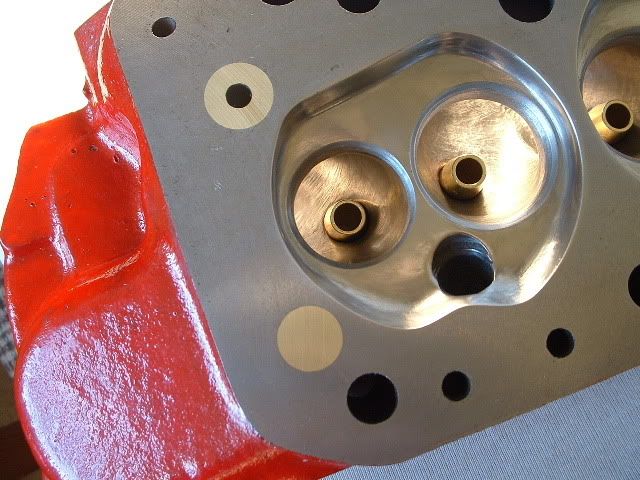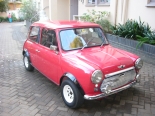| Page: |
| Home > MS Code Discussions > Fully Sequential Injection | |||||||
|
8604 Posts Member #: 573 Formerly Axel Podland |
13th May, 2009 at 04:29:32pm
Now that Jean has developed the MS2/Extra code to handle fully sequential injection on the Megasquirt, I have decided to trial this option.
Edited by Paul S on 13th May, 2009. Saul Bellow - "A great deal of intelligence can be invested in ignorance when the need for illusion is deep."
|
||||||
|
Site Admin  9404 Posts Member #: 58 455bhp per ton 12 sec 1/4 mile road legal mini Sunny Bridgend, South Wales |
13th May, 2009 at 04:34:41pm
I'm trying to keep up this time as I would still like to try this on a N/A 5 port A series On 15th May, 2009 TurboDave said:
I think the welsh one has it right! 1st to provide running proof of turbo twinkie in a car and first to run a 1/4 in one!! Is your data backed up?? one extra month free for all Turbo minis members, PM me for detials |
||||||
 (2)[/url] by [url=https://www.flickr.com/photos/150672766@N03/]Rod Sugden[/url], on Fli) 5988 Posts Member #: 2024 Formally Retired Rural Suffolk |
13th May, 2009 at 05:29:43pm
On 13th May, 2009 Paul S said:
You also need one of Jean's Quad Injector Driver boards. Or Jean's P&H board for those of us using low z injectors (sorry, couldn't resist that one....) I'm still about two weeks away from running the engine on Jean's code (sorry Jean, I missed the date I said) but, the more I look at this as I piece it together, the more I think it's down to individual intake design. Your's and mine are very different in that respect, especially location of injectors. How much that difference makes, remains to be seen. As soon as I finish the bathroom tiling (wifey has banned me from the garage until I've finished....) I'll catch up and wire mine up with the 4 injector P&H board. I've got so many different colour wires in my garage now, I can do any configuration and totally confuse myself..... Anyway, back to your graph.... Is the bottom scale one engine rev (rather than on cycle) because it doesn't quite make sense at the moment - it looks like you are showing a 50% duty cycle at 6000 RPM Schrödinger's cat - so which one am I ??? |
||||||
|
8604 Posts Member #: 573 Formerly Axel Podland |
13th May, 2009 at 06:28:56pm
On 13th May, 2009 Rod S said:
Anyway, back to your graph.... Is the bottom scale one engine rev (rather than on cycle) because it doesn't quite make sense at the moment - it looks like you are showing a 50% duty cycle at 6000 RPM Yes it is just one rev and half a cycle. It would repeat for cylinders 3 and 4. You are also correct in that I'm showing 50% duty cycle at 6000 rpm, but that may be at considerable boost. Also that may be 8000 rpm and 21 psi. The vertical scale is a little arbitary, but helps show the injection strategy. Saul Bellow - "A great deal of intelligence can be invested in ignorance when the need for illusion is deep."
|
||||||
|
1267 Posts Member #: 831 Post Whore Montreal, Canada |
13th May, 2009 at 06:41:19pm
On 13th May, 2009 Rod S said:
On 13th May, 2009 Paul S said:
You also need one of Jean's Quad Injector Driver boards. Or Jean's P&H board for those of us using low z injectors (sorry, couldn't resist that one....) Or both if you want to use the 4-channel driver board for the 4 ignition drivers and the additional DB15 connector. 
Paul, the accel enrichment you get with the single pulse with dual table mode is actually a bug in the main code and is easy to correct. I'll have a fix for that in the next release. As for the graph, unless I'm reading this wrong, there might be a misunderstanding about using the 4 injector channels with the full sequential siamese-port mode. You indicate overlapping injector pulses which leads me to think that you expect to have each channel dedicated to a cylinder. That's not the case. The 2 additional injector channels are simply there to allow staged injection in full sequential siamese mode. This means that the primary channels will still have an injection pulse for both inner and outer cylinders and the secondary injectors will come on at a certain load/RPM (as configured for staged injection) and will also have a pulse for both inner and outer cylinders. Also these pulses for the primary and secondary injectors will have the same timing and the same pulse width (except during the transition from staged off to on). This means that injector channel 1 will inject fuel for cylinders 1 and 2 and channel 2 will inject for cylinders 3 and 4 with channels 3 and 4 inactive while staging is off. And when staging comes on, injector channels 1 and 3 will inject for both cylinders 1 and 2 and injector channels 2 and 4 will inject for both cylinders 3 and 4. If that's what you understood and meant then you can just ignore the text above (and it will hopefully be useful to someone else). In any case, the way it's working will allow you to add more fuel to the outer cylinders because you will have 2 injectors providing fuel during the injection window. If you meant to use the non-siamese full sequential then the issue I see from my understanding of your graph is that all injectors have the same timing with respect to their own cylinder. This means that you will not be able to get the overlapping you show. But as I said, the staged injection with the siamese full sequential should cover your needs (in a different way). Jean |
||||||
 4630 Posts Member #: 20 My sister is so fit I won't show anyone her picture Lake District |
13th May, 2009 at 06:44:49pm
You guys pushing this forward deserve a huge amount of credit. Well done. :) |
||||||
|
8604 Posts Member #: 573 Formerly Axel Podland |
13th May, 2009 at 06:45:53pm
Bugger, that has stuffed that idea then.
Saul Bellow - "A great deal of intelligence can be invested in ignorance when the need for illusion is deep."
|
||||||
|
1267 Posts Member #: 831 Post Whore Montreal, Canada |
13th May, 2009 at 07:09:27pm
It's always possible to implement another mode but I'd like to know the what is currently available doesn't work.
|
||||||
|
8604 Posts Member #: 573 Formerly Axel Podland |
13th May, 2009 at 07:34:25pm
The major problem that I see is that using two pulses close together on the same injector does not work as the theory would suggest.
Saul Bellow - "A great deal of intelligence can be invested in ignorance when the need for illusion is deep."
|
||||||
|
1267 Posts Member #: 831 Post Whore Montreal, Canada |
13th May, 2009 at 07:58:25pm
To be pedantic about it, if you really need 20% duty cycle between pulses (which is probably a good estimate) and if you limit the duty cycle to 50% or less, you can have the pulses closer than with semi-sequential. But that's not significant because you'll still be injecting mostly on a closed valve.
|
||||||
|
8604 Posts Member #: 573 Formerly Axel Podland |
13th May, 2009 at 08:14:36pm
I'm happy to wait for the next release.
Edited by Paul S on 13th May, 2009. Saul Bellow - "A great deal of intelligence can be invested in ignorance when the need for illusion is deep."
|
||||||
|
1267 Posts Member #: 831 Post Whore Montreal, Canada |
13th May, 2009 at 08:30:58pm
I agree that there's more work to be done. And I would also like to see results from others just to see how much difference there is between different setups.
|
||||||
|
1267 Posts Member #: 831 Post Whore Montreal, Canada |
13th May, 2009 at 08:51:40pm
I think that ultimately what will be the best solution is something close to what your graph shows but in a slightly different way (and something I had in mind when I first started thinking about this code) where you have 2 pulses at low load/RPM and a single pulse at high load/RPM. All that with a single injector driver per intake port. And then over that, the possibility to add staged injection for even more fuel if/when needed. With this you could be injecting on an open valve only and maximize the duty cycle.
|
||||||
|
8604 Posts Member #: 573 Formerly Axel Podland |
13th May, 2009 at 09:02:00pm
I think that the transition from dual to single would be a nightmare to set up.
Saul Bellow - "A great deal of intelligence can be invested in ignorance when the need for illusion is deep."
|
||||||
|
869 Posts Member #: 2443 Post Whore Cheshire |
13th May, 2009 at 09:06:08pm
wow, my heads gone now! |
||||||
 (2)[/url] by [url=https://www.flickr.com/photos/150672766@N03/]Rod Sugden[/url], on Fli) 5988 Posts Member #: 2024 Formally Retired Rural Suffolk |
13th May, 2009 at 09:40:21pm
On 13th May, 2009 Paul S said:
The major problem that I see is that using two pulses close together on the same injector does not work as the theory would suggest. By the time the MS has shut off the injector, waited for the next opportunity to fire again, then fired it takes more than just the millisecond to open the injector to get the fuel moving due to reverse pulses in the fuel tract of the injector. Reality is that you need 20% of the duty cycle between pulses. Sorry, been doing something else the last couple of hours..... But, surely this simply calls for larger injectors or "basic" staging. Whilst mine isn't quite finished yet, from earlier posts/discussions when I was being educated about injector duty cycle, I have bought some very high capacity injectors to do my testing with. So I hope to do my testing with the two pulses per injector, per cycle... I am also hoping (refering to my earlier comment) that having the injector boss virtually touching the head, will help in terms of wall wetting and transit time. Also, one of the reasons I have stuck with low z is because they are alleged to open/close faster (remains to be proven....) I just need a big kick to get it finished.... Edited by Rod S on 13th May, 2009. Schrödinger's cat - so which one am I ??? |
||||||
 720 Posts Member #: 2588 Post Whore Pretoria South Africa |
13th May, 2009 at 10:10:05pm
(RUNS..............And drop-kicks Rod S in the ass !!!!)
"So wat we gonna do tonight Brain?"
|
||||||
|
8604 Posts Member #: 573 Formerly Axel Podland |
13th May, 2009 at 10:12:48pm
The problem with big injectors is that they are supposed to be problematic at idle. Hence, I'm reluctant to take too great a step in that direction.
Saul Bellow - "A great deal of intelligence can be invested in ignorance when the need for illusion is deep."
|
||||||
|
1267 Posts Member #: 831 Post Whore Montreal, Canada |
13th May, 2009 at 10:39:39pm
On 13th May, 2009 Paul S said:
I think that the transition from dual to single would be a nightmare to set up. You would have to ensure that one of the VE tables doubled up exactly at the same time as the other zeroed out. The timing table would also have to be set up so that the timing changed precisely at the same time. Synchronising all this would be very difficult. In my opinion. I wouldn't do the transition that way. It would probably be best to have 3 tables: 2 for the 2-pulse mode and 1 for the single-pulse mode. You could then tune the 2-pulse mode to some 100s of RPMs above your intended transition point and the single-pulse table below it. Then the code could make the transition with some hysteresis so as not to jump from one mode to the other and back too quickly. So you would end up with, say, 2 tables for 0 to 3000RPM and one table from 2000 to 8000RPM (for VE and timing) with a transition at 2500RPM (which could actually be at 2700 going up and 2300 going down). This dual mode would mean a bit more tuning than a single mode but might be worth it and would be an "easy" way of getting all the options in a single sequential mode instead of having siamese a, siamese b, siamese c,... Jean |
||||||
 (2)[/url] by [url=https://www.flickr.com/photos/150672766@N03/]Rod Sugden[/url], on Fli) 5988 Posts Member #: 2024 Formally Retired Rural Suffolk |
13th May, 2009 at 10:41:04pm
On 13th May, 2009 Paul S said:
The problem with big injectors is that they are supposed to be problematic at idle. Agreed - but lumpy idle compared to a melted piston..... I know which I would take :) Sorry, very flippant...... I think that is why the staging is the answer, one of us has to actually build the four driver injector system (low z or high z) and see what that does with small/large injectors. I only have 78 (very large) tiles to go..... Schrödinger's cat - so which one am I ??? |
||||||
|
1267 Posts Member #: 831 Post Whore Montreal, Canada |
13th May, 2009 at 10:44:09pm
On 13th May, 2009 Rod S said:
I only have 78 (very large) tiles to go..... Do they really have to all be even? Randomness has it's charm... 
|
||||||
 (2)[/url] by [url=https://www.flickr.com/photos/150672766@N03/]Rod Sugden[/url], on Fli) 5988 Posts Member #: 2024 Formally Retired Rural Suffolk |
13th May, 2009 at 11:36:19pm
On 13th May, 2009 jbelanger said:
On 13th May, 2009 Rod S said:
I only have 78 (very large) tiles to go..... Do they really have to all be even? Randomness has it's charm... 
Unfortunately, wifey borrows my Rubert's Gauge just to check the quality of my grouting.... so random tiles would not work 
I've actually been finishing of the new wiring loom over the last couple of days and the thing I now REALLY hate about MS is the use of a Dsub37 connector - that connector is for small PC type wires, NOT automotive sized wires...... Schrödinger's cat - so which one am I ??? |
||||||
|
1267 Posts Member #: 831 Post Whore Montreal, Canada |
14th May, 2009 at 12:11:04am
On 13th May, 2009 Rod S said:
I've actually been finishing of the new wiring loom over the last couple of days and the thing I now REALLY hate about MS is the use of a Dsub37 connector - that connector is for small PC type wires, NOT automotive sized wires...... That's why it's a very good idea to buy a ready made wiring loom. Unfortunately, none of them are complete for an MS2/Extra setup. |
||||||
|
8604 Posts Member #: 573 Formerly Axel Podland |
14th May, 2009 at 08:34:08am
On 13th May, 2009 jbelanger said:
I wouldn't do the transition that way. It would probably be best to have 3 tables: 2 for the 2-pulse mode and 1 for the single-pulse mode. You could then tune the 2-pulse mode to some 100s of RPMs above your intended transition point and the single-pulse table below it. Then the code could make the transition with some hysteresis so as not to jump from one mode to the other and back too quickly. So you would end up with, say, 2 tables for 0 to 3000RPM and one table from 2000 to 8000RPM (for VE and timing) with a transition at 2500RPM (which could actually be at 2700 going up and 2300 going down). This dual mode would mean a bit more tuning than a single mode but might be worth it and would be an "easy" way of getting all the options in a single sequential mode instead of having siamese a, siamese b, siamese c,... Jean I can see that would work as long as you have enough memory left for the extra table. Saul Bellow - "A great deal of intelligence can be invested in ignorance when the need for illusion is deep."
|
||||||
|
8 Posts Member #: 5706 Junior Member Raleigh, North Carolina, US |
14th May, 2009 at 02:02:09pm
What happens with the existing code when the timing for the two pulses overlaps? Does it effectively result in a single longer pulse? |
||||||
| Home > MS Code Discussions > Fully Sequential Injection | |||||||
|
|||||||
Username: Password:
| Page: |


